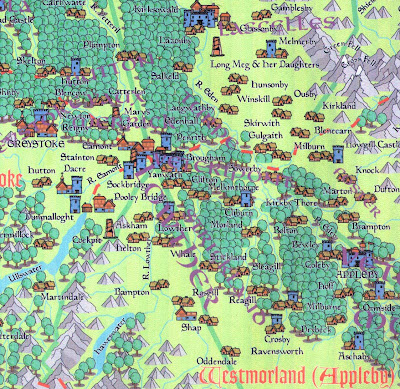INTRODUCTION
The name ‘Braithwaite’ is of
Scandinavian origin. When the Vikings invaded England (from the eighth to the
eleventh century) they found it difficult to pronounce some of the Saxon names
for places and people, so Old Norse became part of the English language. The centre of Viking settlement was in the
north of England, in York and surrounding counties. Some historians say that
the Scandinavian ways of farming were better than the Saxon ways, so the
Viking/Scandinavian settlers were integrated into the local communities of
northern England relatively peacefully. The name Braithwaite derives from two
words in Old Norse, ‘breiǒr’ and ‘thveit’ meaning ‘broad’ and ‘clearing’. There
were many variations in the spelling of the name over the years, from ‘Braythweit’ to ‘Bratwait’. In the
census of 1881 (just over a decade after our ancestors left England), most
Braithwaites were to be found in Westmoreland, then Cumberland and Yorkshire.
Many people these days have become interested in researching
their family histories. I started my research in the 1980s. In 1988 my family research was given great
impetus when I was in Scotland for six months and had the opportunity to look
at the original parish records in Carlisle, hand-written by the incumbent
ministers of the parish. The parish was brought to life in these records. I
could track the families in these small villages through the generations; I
could see which families were having their children at the same time as the
Braithwaites – these children would have gone to school and grown up together.
They were big families, although infant death was quite common. There was some
variation in the way these church records were kept – some ministers were
slapdash and their spelling often a phonetic approximation, while the
penmanship of others was meticulous and the spelling more consistent.
 |
| Plate 1. Medieval map of WEstmorland |
In genealogical research, it is crucial that the researcher
authenticates the family details that are recorded. Although the Braithwaites
have been relatively easy to trace back through the generations because they
remained in the same area of England, mistakes can be made inadvertently. New
finds must be double or triple checked, with confirmation from more than one
source where at all possible. The records of births, deaths and marriages,
census and rate records, wills, registers, diaries, and newspaper articles have
all been good sources of authentication for this story of the Braithwaites. In
the following chapters there will be references to ‘Farv’s diary’. Farv was my
grandfather, Henry Wharton James Braithwaite. ‘Farv’ was his first grandchild’s
interpretation of ‘Grandfather’. It is easier to refer to him as Farv because
there are so many Henry Braithwaites in this story. Farv’s diary contains not
only a record of his life, but also the prior history of his family as he knew
it, going back to the days of his grandfather.
There are a number of Braithwaite descendants who have contributed to the Braithwaite story. My first genealogical contact with a Braithwaite outside the immediate family was Eugenie (Jeannie) Grimsley, whose grandmother was a Braithwaite. Jeannie had visited Melmerby and assembled a fine body of research information before 1981 when she wrote to my aunt Elva and, subsequently, to me. Dorothy Brumley (neé Braithwaite), who contacted me in 1998, was another family researcher who had visited Melmerby and the archival records in Carlisle and readily shared the information she had collected. Rodric, Nicholas and David Braithwaite have been very helpful with details of the New Zealand part of the story. Dawn Zandstra (neé Braithwaite) delved further and farther than any of us into the genealogical records, and she has been an invaluable source of information and assistance in assembling the components of the Braithwaite story and checking the authenticity of the information presented in this document.
There are a number of Braithwaite descendants who have contributed to the Braithwaite story. My first genealogical contact with a Braithwaite outside the immediate family was Eugenie (Jeannie) Grimsley, whose grandmother was a Braithwaite. Jeannie had visited Melmerby and assembled a fine body of research information before 1981 when she wrote to my aunt Elva and, subsequently, to me. Dorothy Brumley (neé Braithwaite), who contacted me in 1998, was another family researcher who had visited Melmerby and the archival records in Carlisle and readily shared the information she had collected. Rodric, Nicholas and David Braithwaite have been very helpful with details of the New Zealand part of the story. Dawn Zandstra (neé Braithwaite) delved further and farther than any of us into the genealogical records, and she has been an invaluable source of information and assistance in assembling the components of the Braithwaite story and checking the authenticity of the information presented in this document.
| Family Tree 1. Skirwith, two generations: William and John |